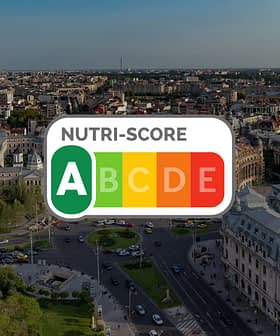European Producers Face Limited Alternatives to U.S. Market

European olive oil exporters are exploring alternative markets due to potential increased tariffs in the U.S., which could put them at a disadvantage compared to Turkey and Tunisia. Despite efforts to expand into Asia, including India and China, experts believe that the slow adoption of olive oil in Asian cuisines will not be enough to offset lost U.S. sales, as cultural food preferences remain a significant barrier to increased consumption.
European olive oil exporters are exploring alternative markets as officials in the European Union and the United States prepare for trade negotiations.
Currently, most goods imported from the European Union, including table olives and olive oil, are subject to a ten percent tariff.
The levy could increase to 20 percent on July 8th if the two sides do not agree to an extension or reach a deal. European olive oil exporters said this would put them at a competitive disadvantage compared to Turkey and Tunisia. Both countries are expected to continue to have a ten percent tariff on their exports to the U.S.
Whatever European producers are losing because of the U.S. tariffs, they’re not going to make up with Asia… The drop in U.S. demand due to tariffs is too large to offset with incremental gains in Asia.
According to U.S. Department of Agriculture data, the United States imported $1.5 billion of olive oil from Italy, Spain and Greece in 2023, the last year for which a complete data set exists.
Overall, the U.S. imported $2.2 billion of olive oil that year, including $428 million from Turkey and Tunisia.
While European producers have been making inroads in India, China and other regions of Asia for years, Christopher Clague, an independent trade advisor based in Malaysia and associate fellow at the International Institute for Strategic Studies, believes short-term opportunities are limited.
See Also:Olive Oil Trade News“Whatever European producers are losing because of the U.S. tariffs, they’re not going to make up with Asia,” Clague told Olive Oil Times. “Despite marketing efforts to push olive oil into new markets, the drop in U.S. demand due to tariffs is too large to offset with incremental gains in Asia.”
“While Asia presents some potential, olive oil isn’t widely consumed here, making it challenging to establish significant demand,” he added.
According to World Bank data, India, China, Japan and South Korea combined to import $477 million of olive oil in 2023, less than one-third of the value of Spanish, Italian and Greek exports to the U.S. that year.
Clague highlighted how Asian cuisines favor other edible fats, including peanut or soybean oil in China and ghee in India. Even Japan, which has a growing olive oil culture, does not have olive oil integrated into everyday cooking like Western countries.
“Japan’s love for Italian food makes it a stronger market than most, but even here, its aging population increasingly prefers traditional Japanese meals over Western influences,” Clague said.
“In South Korea, premium olive oils are sometimes seen as luxury goods, but not as widely adopted staples,” he added. “The fragmented demand across Asia means that olive oil exports may rise modestly but will not compensate for the scale of lost U.S. sales.”
In his adopted home of Malaysia, which imported $8 million of olive oil in 2023, Clague said consumption is mainly concentrated in the European immigrant community.
“If you’re a European olive oil producer looking at Malaysia, I’d suspect it’s a losing game,” he said. “There’s nothing here. Locals don’t use olive oil. They use palm oil, sunflower oil and canola oil.”
“Malaysia reflects broader trends in Asia regarding olive oil consumption,” he added. “The country’s three major ethnic groups — Malay, Chinese and Indian — have distinct culinary traditions that do not commonly include olive oil.”
While Clague said ethnic Malays are predominantly Muslim and may incorporate some Middle Eastern cuisine, including olive oil, into their diets, this is usually in limited quantities.
“While olive oil is sold in supermarkets, it is primarily for expatriates rather than local consumers,” he said.
Taking a broader perspective, Clague said the conditions that have caused olive oil consumption to rise meteorically in the U.S. over the past three decades have not taken shape in Asia.
“The U.S. market is highly established, and consumers there understand the health benefits and culinary uses of different varieties of olive oil,” he said. “In contrast, Asia’s adoption of olive oil remains slow, lacking the same embedded cultural preference for Mediterranean flavors.”
“There’s no natural outlet for the excess capacity, and [European] producers may indeed scramble to find alternative buyers,” Clague added. “They could maybe turn to Africa, but consumers there largely prefer palm and vegetable oils, while if they were to go for Australia, its small population makes it incapable of absorbing large volumes of exports.”
He suggested that lower European olive oil export prices may stimulate some demand in alternative markets.
“However, price cuts alone may not be enough to drive significant increases in Asian consumption, as cultural food preferences remain the primary barrier,” Clague concluded. “Even in Japan, where Mediterranean cuisine is relatively popular, premium olive oil brands tend to compete in the luxury segment rather than aiming for mass-market sales.”









